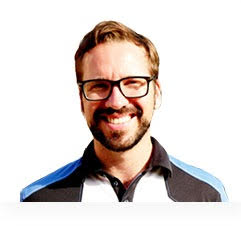When you are looking to implement a three-quarter swing into your golf swing arsenal, you need to understand how it actually differs from what your full swing will be. Now with the full golf swing, what you want to be seeing is a nice full arm extension upwards throughout the backswing, a nice full shoulder turn. So the left shoulder sits underneath the chin and that left arm is pointing somewhere up at the sky here, because that gets the club shot into a nice parallel position and it gets your body turning nice and fully. From that top of the back swing position you’re moving down through the point of impact repeating the same position on the other side of your swing and rotating the body all the way towards your target and even past the target if you are looking to rotate the body even more.
Now obviously everyone has a different full swing, but that was a general example of what you want to be seeing. Now the three-quarter swing is a very abbreviated version of that or slightly abbreviated version of that. But there are some key differences that you also need to pay attention to. With the three-quarter shot you will not have the amount of distance that you have with the full shot. You shouldn’t be out to hit as high as you do with the full shot, but you will be able to gain more control of the ball flight, more control over the spin that you are imparting as well. Now the differences and the feelings that you want to be having, it can come in a number of different ways.
How I like to do it is focus on the amount of travel that your arms do within the golf swing. So when you are getting settled for a full swing, you’re moving the club back and that left arm is pointing upwards pretty much towards the sky. If you imagine a big clock face around my body as I get up to the top I want my left arm to be pointing pretty much up at high noon, up at 12 o’clock. When I’m taking this swing and I’m moving it back, I don’t want my left arm to be getting up to 12 o’clock. I want it getting about half turn on the clock face. If my left arm gets up to that position there you can see that my shoulders haven’t quite turned as fully, my arms haven’t traveled quite as far and this will limit the amount of potential speed that I can create.
However with the amount of potential speed lowered I can now have a little bit more control over the downswing. So into that three-quarter position, moving down through impact as normal and then moving up to the full swing position where again my right arm does not quite reach that 12 o’clock position again. So that’s the three-quarter swing in very, very basic terms, but there are things that you can adapt, there are things that you can change if you want to alter the ball flight even more.






